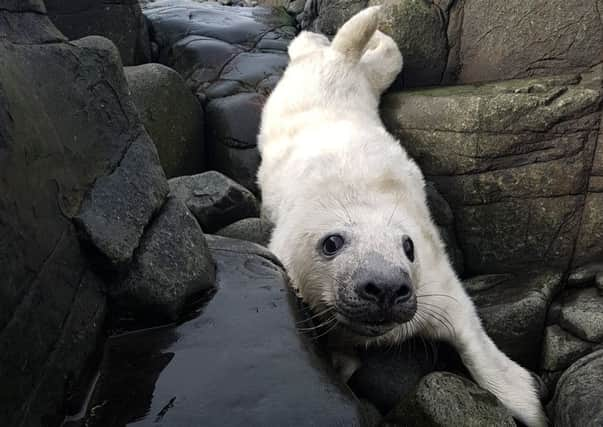First seal pup spotted on the Farnes


The annual seal count, carried out by the resident rangers, is triggered by the birth of the first pups.
Every year, more than 1,500 pups are born on the islands, which is one of the largest Atlantic grey seal colonies in England with a population estimated at 5,000.
Advertisement
Hide AdAdvertisement
Hide AdThe breeding season for seals on the Farnes sometimes starts as early as mid-September with the majority of pups being born in October and November. Rangers from the National Trust spend three months each autumn monitoring the success rate of the breeding seals.
Ranger Jen Clark said: “Once all the seabirds have gone, our attention soon turns to the seals. This is always an exciting time of year, waiting for the first pup to be born.
“It’s impossible not be won over by the bright white, fluffy, wide-eyed pups. Even though we will hopefully see more than 2,000 pups over the coming weeks, the cute factor never wears off.”
The grey seals are thriving on the Farne Islands; the record seal count was 2,041 in 1971 and this was exceeded last year with a count of 2,295 – the first time it surpassed 2000 since the ‘70s. In 2015, the count rose by 7.8 per cent to 1,876. A lack of predators and a plentiful supply of sand eels – which makes up about 70 per cent of the seals’ diet – contribute to the success of the colony.
Advertisement
Hide AdAdvertisement
Hide AdThe rangers have also noticed changes to the location of the rookeries (the breeding sites for the seals). While more pups used to be born on the islands of North and South Wamses, now many seals try to breed on Brownsman and Staple islands. This has resulted in mortality rates dropping, possibly because these islands offer better protection from storms and high seas.